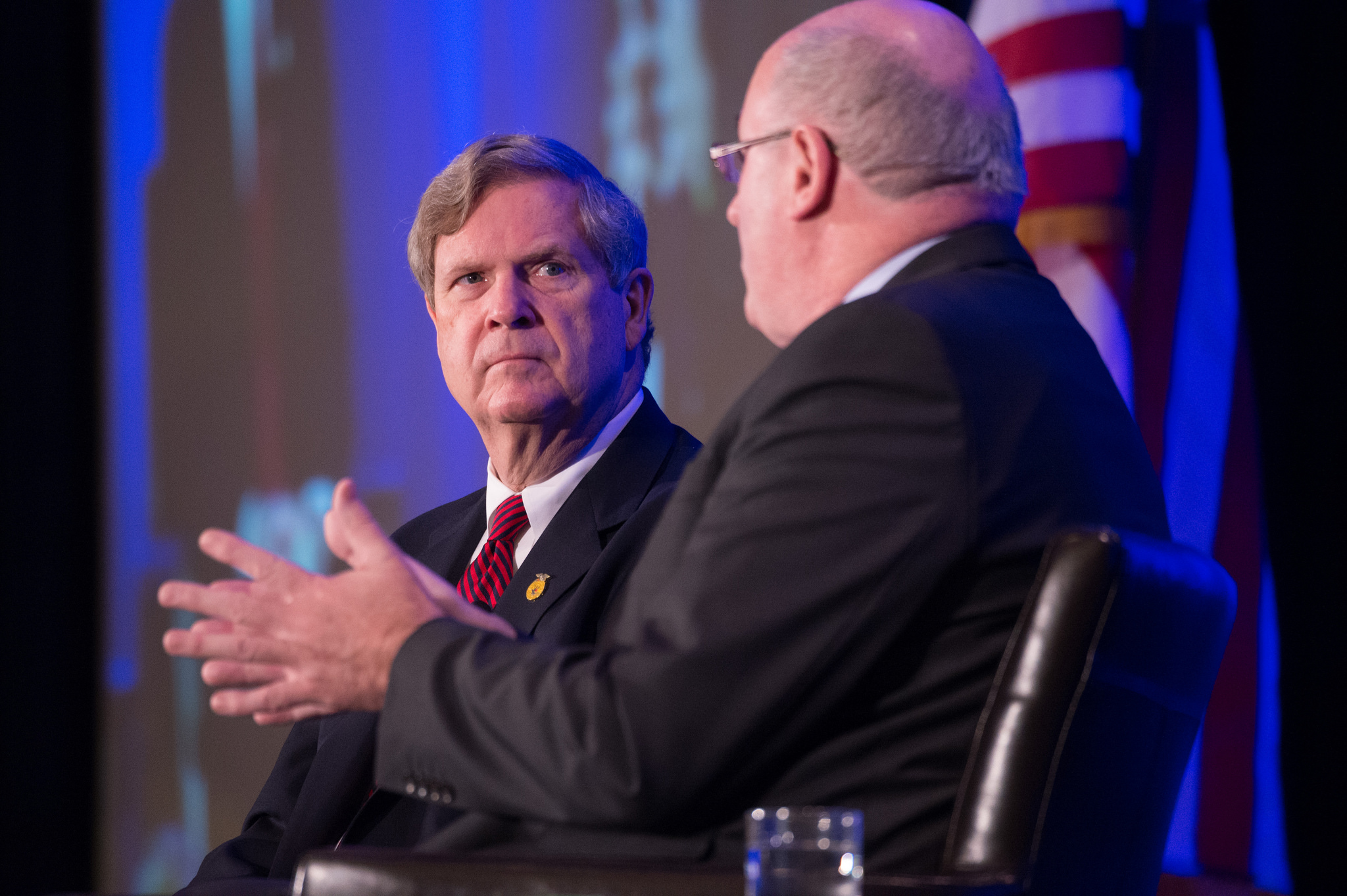US, EU agriculture leaders try to ease trade concerns

Farm Futures | 19 Feb 2015
US, EU agriculture leaders try to ease trade concerns
Geographic indicators, biotechnology and sanitary and phytosanitary issues top of mind in settling U.S.-EU trade differences.
By Jacqui Fatka
An ocean not only separates the United States and European Union physically but also philosophically over ag trade, environment and animal welfare issues.
On Thursday, U.S. Secretary of Agriculture Tom Vilsack shared the stage with his counterpart Phil Hogan, European Union commissioner of agricultural and rural development at the U.S. Department of Agriculture’s annual Outlook Forum.
The two nations continue to negotiate the Transatlantic Trade and Investment Partnership and spent time relaying to each other of the importance of political realities within both the U.S. and EU, and a desire to improve market opportunities.
Hogan shared that the "moment is ripe to create a trade super highway between the EU and the U.S." but there’s no denying there’s several roadblocks and detours that lie ahead.
Hogan noted that the EU enjoys a healthy trade surplus with the rest of the world, equivalent to $135 billion in 2013. In the same year, the U.S. exported approximately $140 billion, which Hogan said shows the two nations are "really shoulder to shoulder in the global marketplace."
Whereas U.S. has helped meet world market demand with competitively prices products, Hogan explained that the EU’s stringent environmental, animal welfare, social, health and labor standards have helped in turn bring more money back from consumers seeking those end products.
Part of this "quality approach" in the EU is through geographical indicators, which Hogan said is about "rural intellectual property." He noted that GIs represent 30% of EU agrifood exports to the U.S., worth about €3.4 billion.
In a follow-up press conference with Hogan and Vilsack, Vilsack said GIs are a significant issue, especially to the dairy industry which could see their ability to use words commonly used with cheeses such as parmesan and feta end.
Hogan shared that although GIs are important to the EU within any final trade deal, the gap people believe exists between the two superpowers may not be as much as they originally thought. Over 95% of the names are deemed as "noncontroversial" Hogan added.
During a roundtable discussion, Vilsack responded back that he’s "still waiting to see on a map where Feta is" pointing to the fact that feta cheese does not respond to any geographic region that produces the cheese variety.
And market access, sanitary and phytosanitary and technology issues are also key points needing additional time to sort out a solution, he said.
Hogan explained that genetically engineered crops are a "big political issue for the EU even if the science is sound." He expects in the coming weeks a very detailed discussion on biotech crops, and there has been progress made in the cultivation of GE crops.
Vilsack also questioned Hogan on the approval of poultry washes approved in the U.S. and not in the EU. Hogan said it will be important for cooperation to help alleviate any concerns.
Vilsack and Hogan also met the day prior and Vilsack said he continues to communicate the political realities that any trade deal in the U.S. has to find support from the agricultural industry to get Congressional approval. Much of the differences that exist between the U.S. and EU are due to the political realities that influence the perceptions surrounding the trade issues.
Vilsack noted that it will take creativity, and that will likely come from those involved in the negotiations to stay away from drawing red lines in the sand. "Red line statements make it hard to negotiate," he said.
– USTR presentation
– EU commissioner speech
– Forum page





